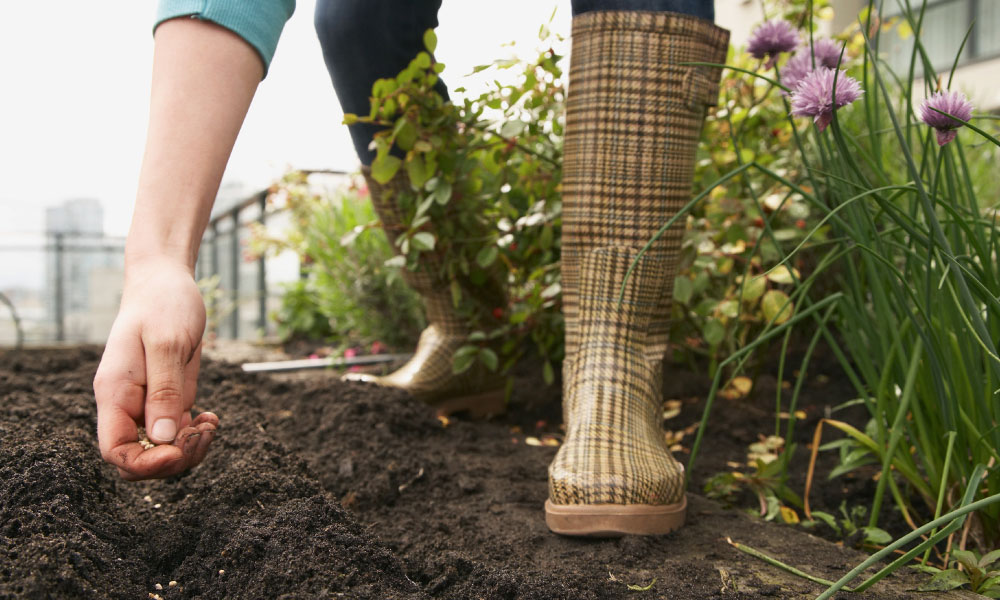
January is the time to plant flower seeds and some vegetables. Cultivate them indoors or out in preparation for a prolific and pretty spring.
January is no time to slouch on garden duties. Seeds need planting, tools need tending, and much mulch is needed among other chores.
This month's duties
1. In the flower department, plant sweet alyssum, ornamental cabbage and kale, Johnny jump-ups, pansy (faceless are my favorites), snapdragons, violas, and stock.
2. Plant vegetable plants: artichoke crowns, asparagus crowns, broccoli, cabbage, lettuce, and spinach. We can still plant strawberries and herbs such as: chervil, chives, cilantro, oregano, parsley, rosemary, sage, and thyme. Start selecting onion sets and get them into the ground. There are many varieties these days, so take your time in your final selection.
3. If you are blessed enough to have a greenhouse or cold flats, start tomato seeds indoors.
4. Time to be spraying fruit trees with dormant oil. Orange oil is good for this and safe for the environment.
5. Check out (and repair if necessary) your irrigation system. Also, design your system for this spring.
6. On cold days, working inside is best and a wonderful opportunity to clean and oil gardening tools.
7. Mulch, mulch, and more mulch is the byword for the winter. Mulch promotes moisture retention and protection from the cold.
8. Fertilize your established pansies with dried blood meal or cottonseed meal at the rate of 3-4 pounds per 100 square feet of flowerbed.
9. With the heavy dew and light rains, keep an eye on your bird feeders. Make sure the bird seed doesn't mold. Moldy seed can make birds sick. Be kind to your backyard buddies.
10. Continue to prune the dead wood out of oaks and other shade trees. Removing the dead wood, especially those head height will provide kindling and allow sunlight to reach inside the umbrella of the tree.
11. Trees, shrubs, plants, etc. need watering during the winter. Check the soil around your trees. If you’ve had less than 4 inches of rain in the past 30 days, trees love deep watering. A slow drip (very slow dribble) for a 24-hour period is best for trees.
Seed strategy
According to the National Resources Conservation Service Plant Materials Program: Sometimes, a weed is not a weed.
"Menard Germplasm purple threeawn, a warm season perennial bunchgrass found across western North America, extending from Canada into Mexico, can be used for critical area site revegetation, erosion control, and right-of-way plantings due to its fibrous root system. It is able to establish and persist in low-moisture environments. This species can also be included in range and wildlife seeding mixes to increase species diversity," according to the U.S. Department of Agriculture.
"It is important to keep in mind the natural succession of disturbed areas when developing seed mixes. The Plant Conservation Alliance has recently developed a National Seed Strategy. Part of this strategy is to use 'the right seed, in the right place, at the right time.'”
Conservation practitioners should always strive to use the right plant to meet resource objectives, whether that is forage production, disturbed site reclamation, or native habitat restoration. The right choice could be a short-lived native that has evolved to capture disturbed sites and pave the way for longer lived perennial species.
Sometimes, a weed is not a weed. Sometimes, a weed is the best tool for the job.
Til next time. Keep your souls and soles in your garden! Remember the True Master Gardener: Jesus said, “I am the vine; my Father is the Gardener.” John 15:1
Contact Martelle Luedecke at 512-769-3179 or luedeckephotography@gmail.com or Bill Luedecke at 512-577-1463 or bill@texasland.net.












